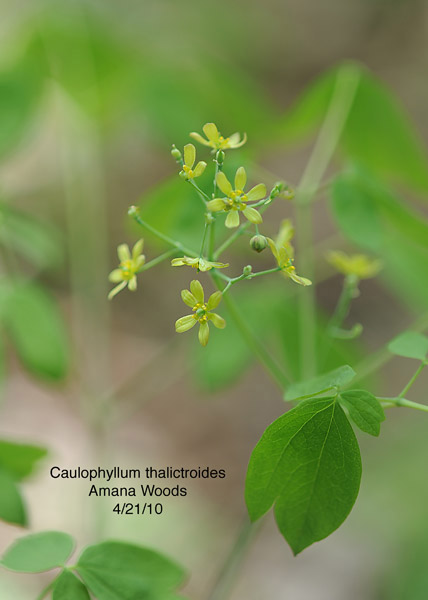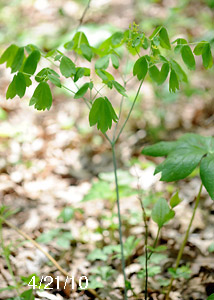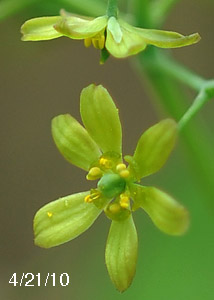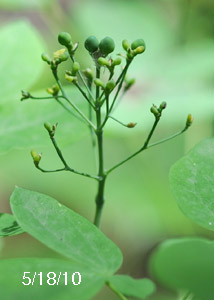
Date: April 21, 2010. Location: Amana Woods (map)
| Classification Hierarchy | |
| Kingdom | Plantae |
| Subkingdom | Tracheophyta |
| Superdivision | Spermatophyta |
| Division | Magnoliophyta |
| Class | Magnoliopsida |
| Subclass | Magnoliidae |
| Order | Ranunculales |
| Family | Berberidaceae |
| Genus | Caulophyllum |
| Species | Caulophyllum thalictroides |

Date: April 21, 2010. Location: Amana Woods (map)
Scientific Name: Caulophyllum thalictroides ([Gr] caulos - stem; phyllon - leaf;
thalictroides - the leaf shape is similar to Thalictrum (Meadow-rue))
Common Name: Blue Cohosh
Origin: Native Habitat: Rich woodlands, shade
Notes: The roots and raw blue seeds from this plant are listed as poisonous (see ref. #1 and #5).
Herbal preparations from blue cohosh have been used to induce labor but there are reports
of dangers to the newborn (ref. #6).
Additional references: 1, 2, 3, 4, 5, 6, 7, 8, 9, 10, 11, 12.
Flowers: April; The inflorescence is a panicle of small yellow/green flowers (~ 1 cm. each) The flower parts are 6,6,6,1 (sepals, petals, stamen, pistil) with three or four small bractlets at the base behind the yellow/green sepals. The petals are small, thickened, gland-like, with a narrow base (claw) at the point of attachment. The size and claw of the petal is much smaller than that of the sepal. Swink and Wilhelm describe the fruit and seed development thusly:
Leaves: A large triternately compound sessile leaf arises on a single glabrous stem about a foot above the ground. The leaflets are petioled, often terminating in two or three acute lobes.
Glossary: Botanical Terms pdf



